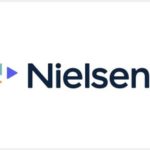Patrick Grove: 8 Predictions For The SEA Tech Scene In 2018 and 2019

The Catcha Group has pulled together a report to analyse the next stages in the evolution of the regions tech ecosystem.
In the report, Catcha Group reviewed the predictions made in 2017 on the regional tech scene and make 8 new predictions on the direction of the SEA tech scene over the next 24 months.
We managed to get 6 out of 7 our Jan-2017 predictions correct but let us see how we do with our 8 new predictions below:
By the end of 2019, SEA will have 460m internet users and $10bn raised in private tech funding
Over the last 18 years, we have seen SEA internet users exceeding that of major countries such as Japan, UK, and Russia.
At the current growth rate, we forecast that by the end of 2019, we will have 460m internet users in SEA, creating a massive addressable market that will drive private tech funding both from regional and foreign investor
First Decacorn ($10bn+ valuation) will emerge from SEA
The SEA tech ecosystem in 2017 is interestingly similar to that of China in 2008. SEA had 330m internet users to China’s 300m, while the combined valuation of the leading tech companies in both regions respectively (Baidu, Alibaba and Tencent for China; Grab, Go-Jek, Razer, Sea Group, Tokopedia, Traveloka and iflix for SEA) stood at about $22bn.
Fast forward to 2019, an extrapolation of SEA internet users assuming recent growth rates puts it at 460m users, similar to that of China in 2010, with 459m users. By using China as a proxy and inferring a relationship between the number of internet users and the resulting valuation of the leading tech companies (combined valuation of Baidu, Alibaba and Tencent of $94.5bn), we estimate that the combined valuation of the leading SEA tech companies mentioned above could potentially reach up to $86.5bn.
This implies that the average valuation of each of these companies could be up to $12.4bn. If this assumption holds true, it would give birth to the regions the first group of Decacorns.
A new Unicorn will be built in less than 3 years from launch
In the early 2010s, Rocket Internet’s entrance into SEA brought in an abundance of capital and talent into the market. At the same time, Amazon Web Services (AWS) started offering its services in SEA and lowered the cost of “starting up” significantly. This had a positive knock-on effect on the number of early-stage companies as well as the amount of funding in the region.
Although initially well distributed across the startup landscape, as the market grew, funding became increasingly concentrated to a fewer number of proven players – in 2017, a staggering 90% of total private funding went to just 4% of the deals. In contrast to our days in iProperty, the time
it takes to build a large tech company has reduced significantly. It took 10 years for iProperty to achieve a $500m+ valuation, while it took only 4.7 years on average for the current SEA tech unicorns to achieve their unicorn status.
With the right mix of capital, talent and infrastructure, we expect to see a unicorn that will be built in less than 3 years from launch.
Chinese companies remain the largest source of tech funding
During the earlier Catcha days, we saw a lot of interest from Western companies trying to expand into SEA via partnerships or investments. However, over the last few years, Chinese companies have taken over that role and have become the biggest funders of SEA private tech companies.
In 2017 alone, they led 3 of the biggest deals in SEA, investing a total amount of $4.3bn in those 3 deals alone (representing 72% of total deal value in 2017). We expect this to continue and for China to remain as the largest source of tech funding in SEA.
At least 2 more IPOs in excess of $500m
The biggest exits in SEA have historically come from M&A – for example, even though we have listed 5 companies in the last 10 years, our biggest exit remains the sale of iProperty to REA Group for $530m+.
However, 2017 was a big year for SEA tech IPOs. Sea Group IPOed on the New York Stock Exchange at a $4.9bn valuation while Razer IPOed on the Hong Kong Stock Exchange at a $4.4bn valuation.
For the first time ever, two SEA tech companies successfully executed an IPO at Unicorn valuations. While it’s still early to judge their sustained performance in the public market, it’s fair to say the 2 IPOs have definitely boosted investors’ confidence on the prospects of future SEA tech IPOs.
We expect to see at least 2 more IPOs in excess of $500m by SEA tech companies within the next 24 months.
Consolidation of the SEA tech landscape – there will be 2 acquisitions in excess of $500m
Organic growth alone will not be sufficient, and these companies will need to resort to using M&A as a growth engine to acquire users and technology as well as to quickly move into adjacencies.
We have already seen the likes of Grab and Go-Jek acquire payment companies as they try to take advantage of their huge user base and expand their platform offering.
With a massive pipeline of high-quality startups in SEA as potential targets, we expect to see more and more unicorns and corporates using M&A to grow. We have seen this play out in the USA and China and expect SEA to follow a similar trend.
Corporates and governments in SEA will invest at least $1bn in the startup ecosystem
The Malaysian and Singaporean governments are especially active in ecosystem building, implementing financial and non-financial incentives to spur growth and innovation.
Corporates in SEA are also exploring different ways to partner with, invest in, or acquire startups that are aligned with their corporate strategy.
Over the next 24 months, we expect that corporates and governments in SEA will collectively invest at least $1bn into the whole ecosystem.
At least one SEA country will accept/issue a virtual currency as a legal tender
Cryptocurrencies. The cryptographic nature of digital currencies does not gel well with regulators who want to have more oversight over the flow of funds.
However, virtual currencies could make significant inroads as a key enabler of attaining a cashless society. With the massive increase in public interest and growing adoption of digital currencies, governments in the region are slowly becoming more accepting of it but strictly within a regulatory framework that prioritises transparency and security.
Although currently not yet fully embraced, we think it’s just a matter of time before a SEA country takes the bold leap towards adopting a virtual currency as a legal tender.
So there you have it, our 8 predictions for the SEA tech scene over the next 24 months – we are super excited to see how things play out and how we fare with the predictions.
This article was originally published on Patrick Grove’s LinkedIn.
MARKETING Magazine is not responsible for the content of external sites.









